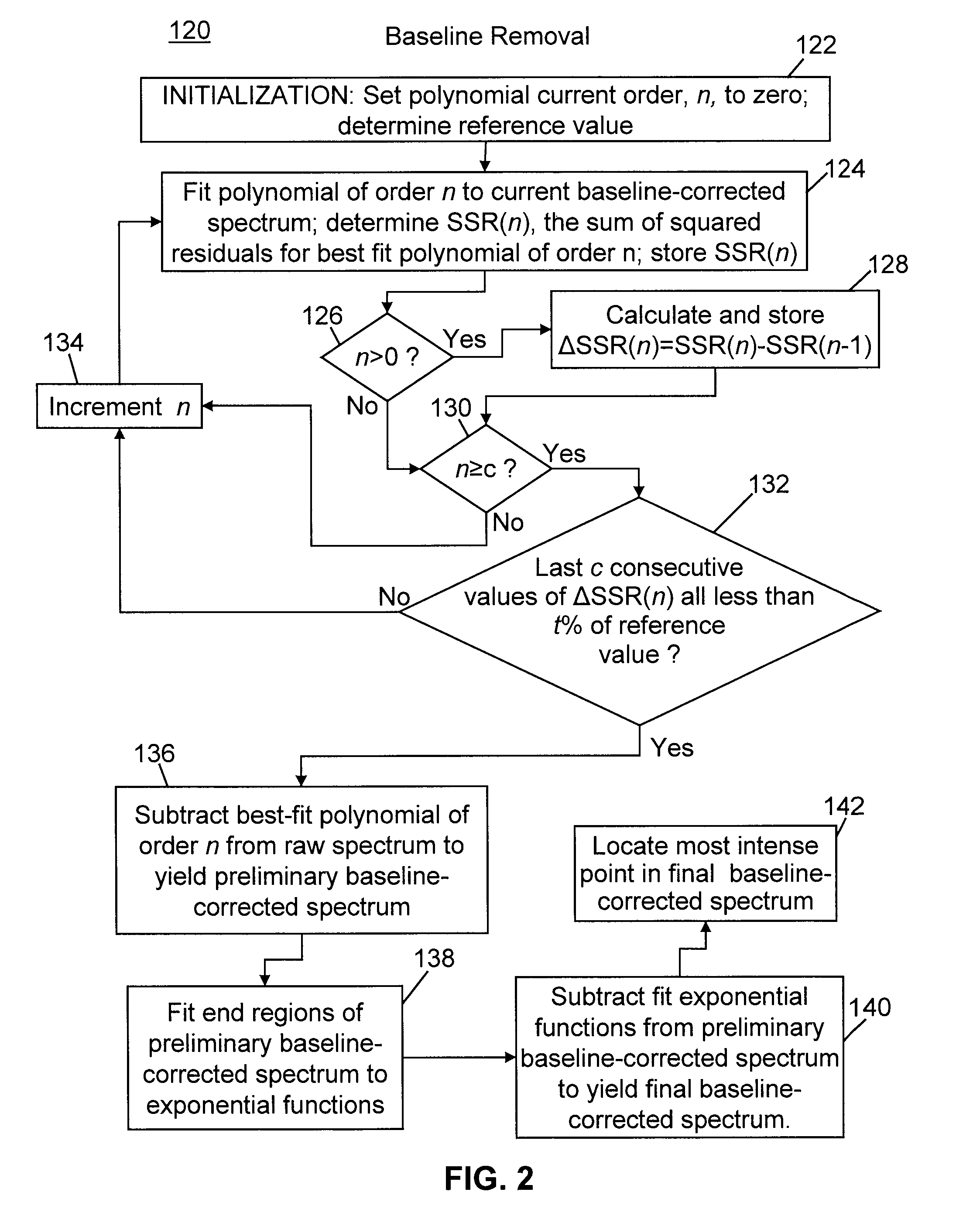Methods of automated spectral peak detection and quantification without user input
a technology of spectral peak detection and quantification, applied in chemical methods analysis, instruments, material analysis, etc., can solve the problems of mass spectrometry techniques, novice or untrained operators will very likely get an incorrect result or no result at all, and achieve the effect of convenient handling
- Summary
- Abstract
- Description
- Claims
- Application Information
AI Technical Summary
Benefits of technology
Problems solved by technology
Method used
Image
Examples
Embodiment Construction
[0040]The present invention provides methods of automated spectral peak detection and quantification that do not require any user input or intervention. The methods described herein can accommodate and model all types of spectral data, where the term “spectral data” is broadly defined as described above, and provide robust automatic detection, integration and reporting of spectral peaks. Any and even all model parameters utilized in these methods may be adaptively determined in a manner that is invisible to the user. The following description is presented to enable any person skilled in the art to make and use the invention, and is provided in the context of a particular application and its requirements. Various modifications to the described embodiments will be readily apparent to those skilled in the art and the generic principles herein may be applied to other embodiments. Thus, the present invention is not intended to be limited to the embodiments and examples shown but is to be...
PUM
 Login to View More
Login to View More Abstract
Description
Claims
Application Information
 Login to View More
Login to View More - R&D
- Intellectual Property
- Life Sciences
- Materials
- Tech Scout
- Unparalleled Data Quality
- Higher Quality Content
- 60% Fewer Hallucinations
Browse by: Latest US Patents, China's latest patents, Technical Efficacy Thesaurus, Application Domain, Technology Topic, Popular Technical Reports.
© 2025 PatSnap. All rights reserved.Legal|Privacy policy|Modern Slavery Act Transparency Statement|Sitemap|About US| Contact US: help@patsnap.com



